A Visit to the Marrakech Medina
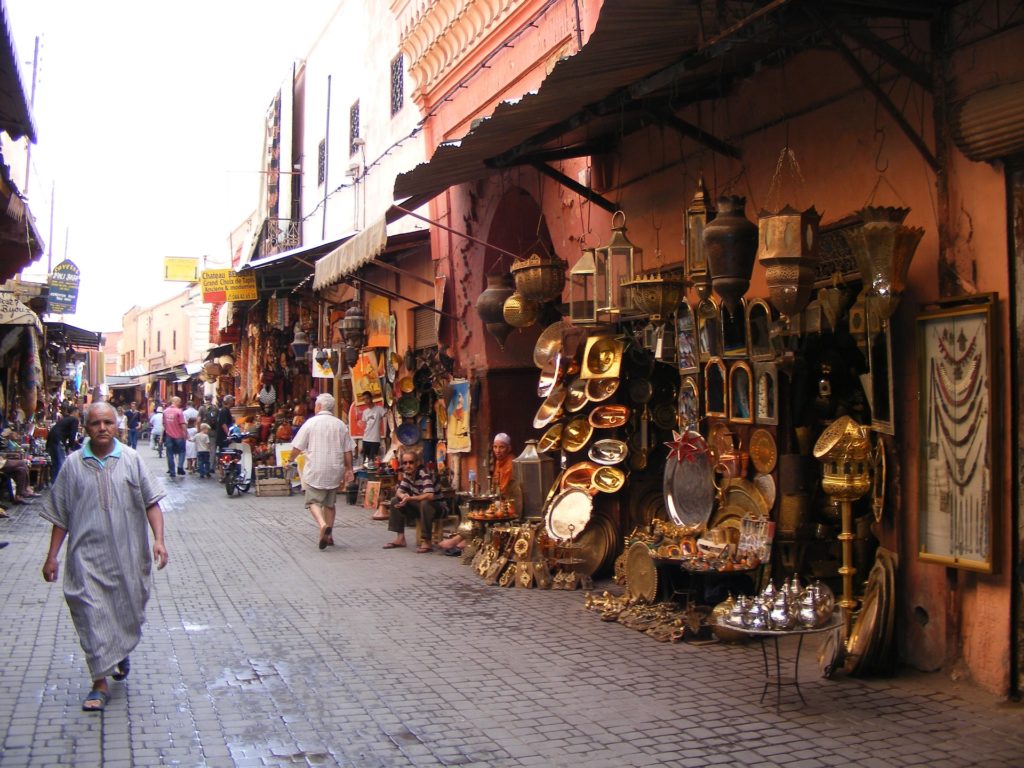
Listen below. Click “globe” for more languages.
The reddish-pink ramparts around the Marrakech medina enclose a thousand years of history. The Almoravids, a confederation of Berber tribes, conquered North Africa and Muslim Spain in the 11th and 12th centuries and established Marrakech as their capital. The new city became a thriving political and economic center, as well as a multicultural and multiethnic crossroads.
At the time, the medina was the commercial and religious center of the city. It continues to be a hive of activity, which now attracts visitors for its colorful markets, stately homes known as riads and historic sites.
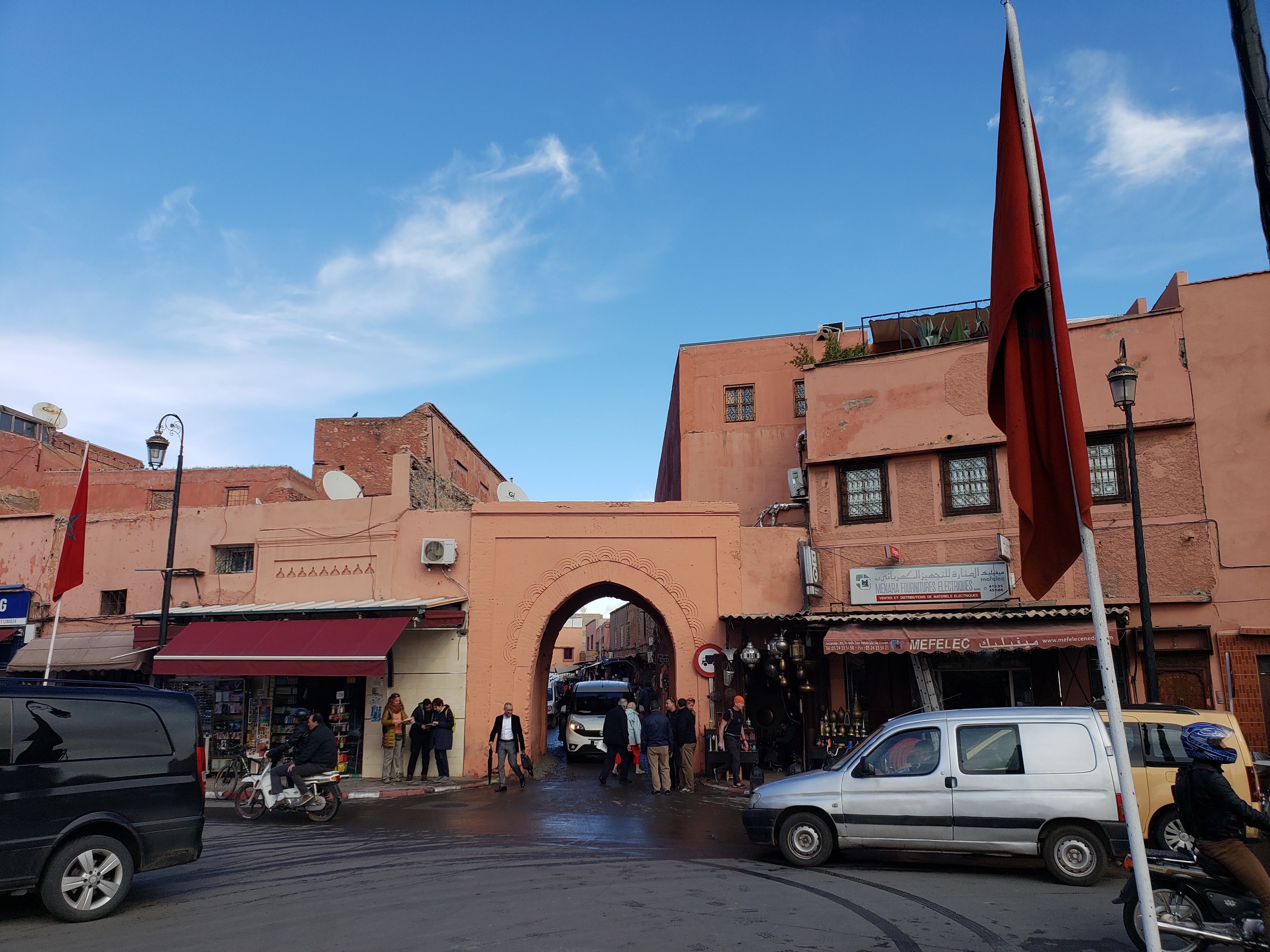
Architectural Marvels
The medina covers an area of 700 hectares. It includes residential properties, religious buildings, squares, and the souks, or markets. UNESCO made the Marrakech medina a World Heritage Site in 1985 thanks to a wealth of well-preserved architectural and artistic masterpieces. Some monuments date back to the Almoravid period, like the Koutoubia Mosque and the ramparts, whose pinkish hue comes from pigment found in the local earth. About 20 ancient gates, some monumental and others more humble, provide access to the medina.
The Koutoubia Mosque, with its 253-foot high minaret, is Marrakech’s largest mosque and most outstanding monument. It used to be the first landmark travelers saw when they approached the city by land. Nowadays, it can be seen from afar, like a lighthouse in the desert. The reason it still dominates the skyline is that at the time of the French protectorate (1912-1956), the government decreed that no building could rise above the height of the Koutoubia’s minaret.
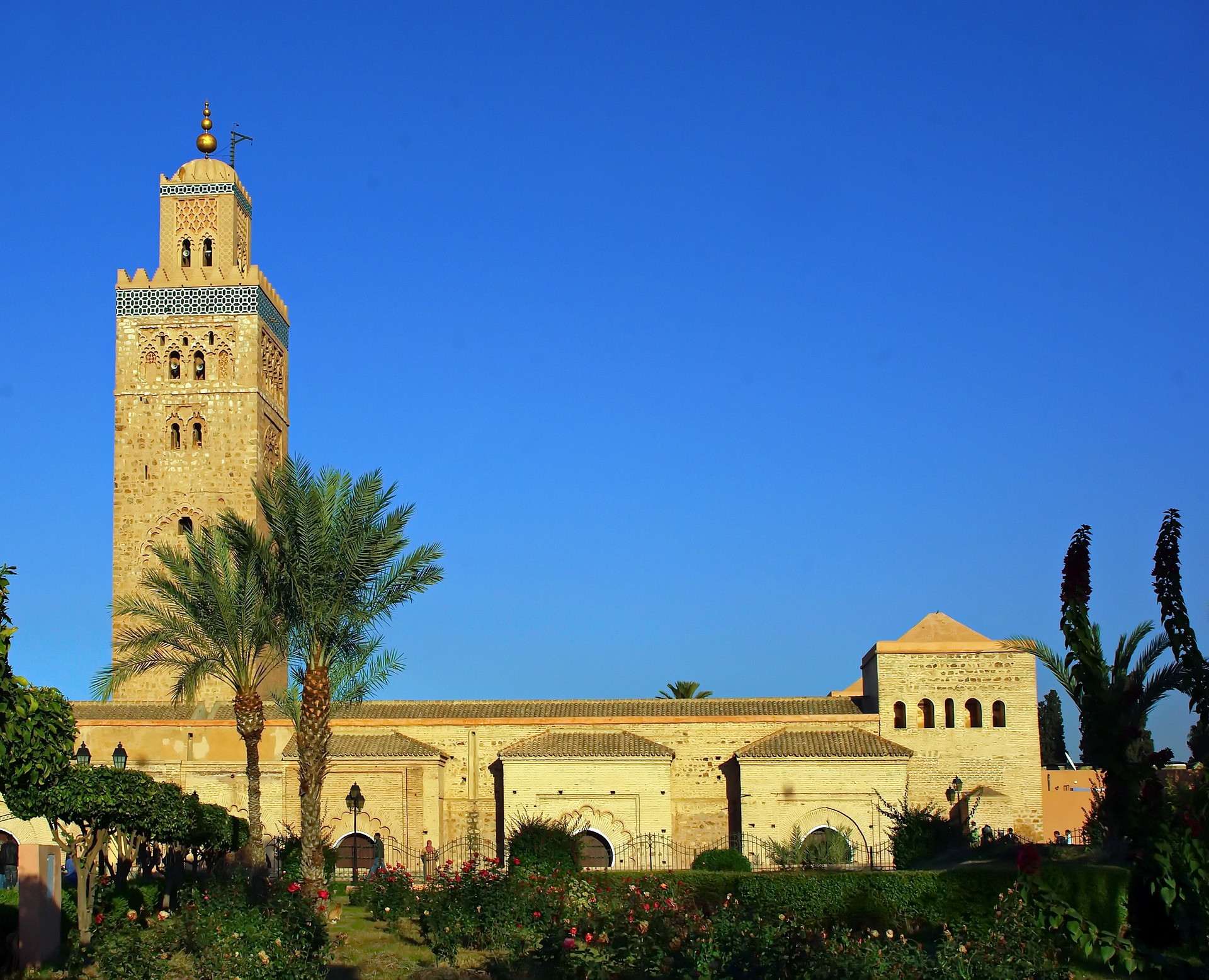
The heart of the medina is the Jemaâ El-Fna Square. It started as a parade ground for the sultan’s troops and a place of execution of criminals. In modern times, taken over by street sellers and entertainers, the square has a life of its own under the shadow of the Koutoubia. It’s relatively quiet during the day, with only a few hawkers and sellers displaying their products.
Nighttime in Jemaâ El-Fna
As the sun begins to set, Jemaâ El-Fna comes alive. The smell of roasting meats from the food stalls on the east side awakens the taste buds. People gather around the storytellers, an age-old tradition in the square. The rhythmic beating of instruments by Gnawa musicians becomes hypnotic. The water sellers, with their colorful costumes, ring copper bells to attract customers. The strident notes of the pungi, a wind instrument, announces that a snake charmer is nearby. The henna ladies, piping bag at the ready, look for customers.
The best way to experience Jemaâ El-Fna is to find a table at one of the terraces that surround the square and order mint tea with Moroccan pastries. My favorite time was the late afternoon. The distance and detachment allow you to observe the transformation of the square. People start to trickle in. Vendors set up their stalls. Food smells tickle your taste buds. However, the truly magical moment is when the sun sets behind the Koutoubia Mosque. The sky turns yellow, orange and red; the shadow of the minaret lengthens over the stalls, lights begin to flicker like fireflies.

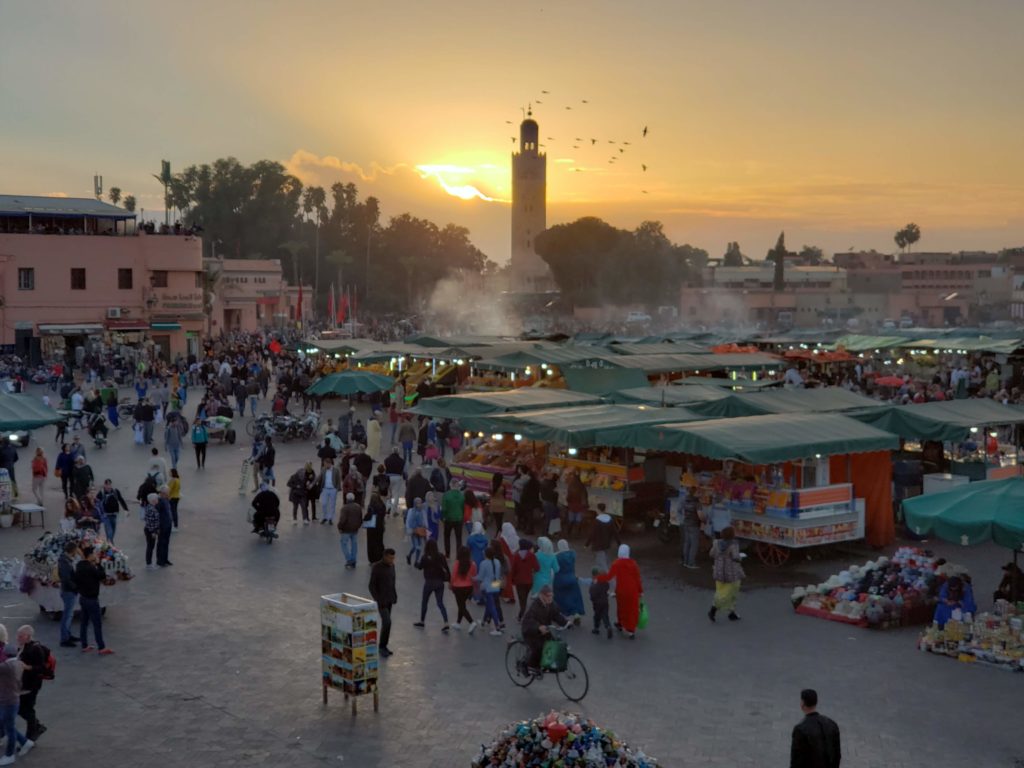
The Other Side of the Magic
Unfortunately, there’s a rather different world hiding beneath the seemingly attractive surface. The henna ladies grab the hands of unsuspecting women and start drawing. And then they will demand money. They can get feisty if you decline. I walked around with my hands firmly in my pockets. The snake charmers will ambush passersby and drape a snake on their shoulders. And yes, they demand money for the privilege. I have a phobia of snakes, so I kept watching over my shoulder, and the sound of the flute sent my heart racing with anxiety.
“Helpful” locales will give you directions if you look lost and then stay with you and demand money. It happened to us. This man helped us get out of a tangle of narrow streets and asked for 100 dirhams. My husband negotiated down to 20, but it made me uncomfortable.
Photographing people is frowned upon, and entertainers and water sellers will request exorbitant sums to have your picture taken with them. However, it wasn’t a photograph of people but of a place that created some awkwardness for us. My husband was about to take a picture of the tanneries when a man came out of nowhere and demanded money. My husband refused and left, although this man followed him yelling for money.
The Mistreatment of Animals
Animal welfare is not a top priority. And there’s no solution in sight for as long as tourists support the mistreatment of animals. Snake charmers are known to defang the snakes and sew their mouth together, leaving a tiny gap. They can’t eat and die.
Barbary monkeys, the only macaques native to North Africa, are an endangered species. They’re caught from the wild, dressed in silly clothes and diapers, and chained to a stake. They are forced to spend all day long in the square waiting for tourists willing to take a picture. Camels are also used as a magnet for tourists’ money.
Since traffic is banned inside the medina, the only modes of transport are mopeds and donkey carts. Donkeys are usually overworked and mistreated. Horses that pull caléches, however, are looked after by a charity, SPANA, that makes sure they’re fit and healthy.
Inside the medina
Trade has been the medina’s main raison d’être since its foundation. Marrakech was a stopover for caravans traveling across the Sahara. All kinds of shops line the narrow winding lanes. Artisans and tradesmen have workshops where they carry out traditional activities like metalwork or carpentry. Slatted ceilings provide shelter from the relentless summer sun. As motor vehicles cannot enter the medina, mopeds are the favored mode of transportation. They swarm tourists with apparent total disregard for their safety. For the most part, they are careful not to knock anyone down. I didn’t witness any serious accidents, but I found the fumes and noise intensely annoying.
Handicrafts in the Medina
But the medina is also filled with beautiful things to buy at the souks. The Rue Semarine in the main gateway to the souks, through an arch in the north side of Jemaâ El-Fna Square. The goods for sale include caftans, carpets, robes, and antiques. The Souk El Kebir, the leather goods market, is a narrow alley with tiny shops. The Souks des Tapis is where the carpet sellers congregate. The Souk des Teintures is decorated with sheaves of wool dyed in bright colors. At the Souk des Ferronniers, ironworkers create furniture and lamps. The Souk El Khemis is a flea market. The Souk El Bab Salaam is a covered market also known as the Spice Market. They all have one thing in common: haggling is customary.
The call to prayer rings throughout the city several times a day. The faithful gravitate towards the mosques that dot the medina. Prayer times punctuate the daily lives of the inhabitants of the Marrakech medina day in and day out. The way it has been for centuries.
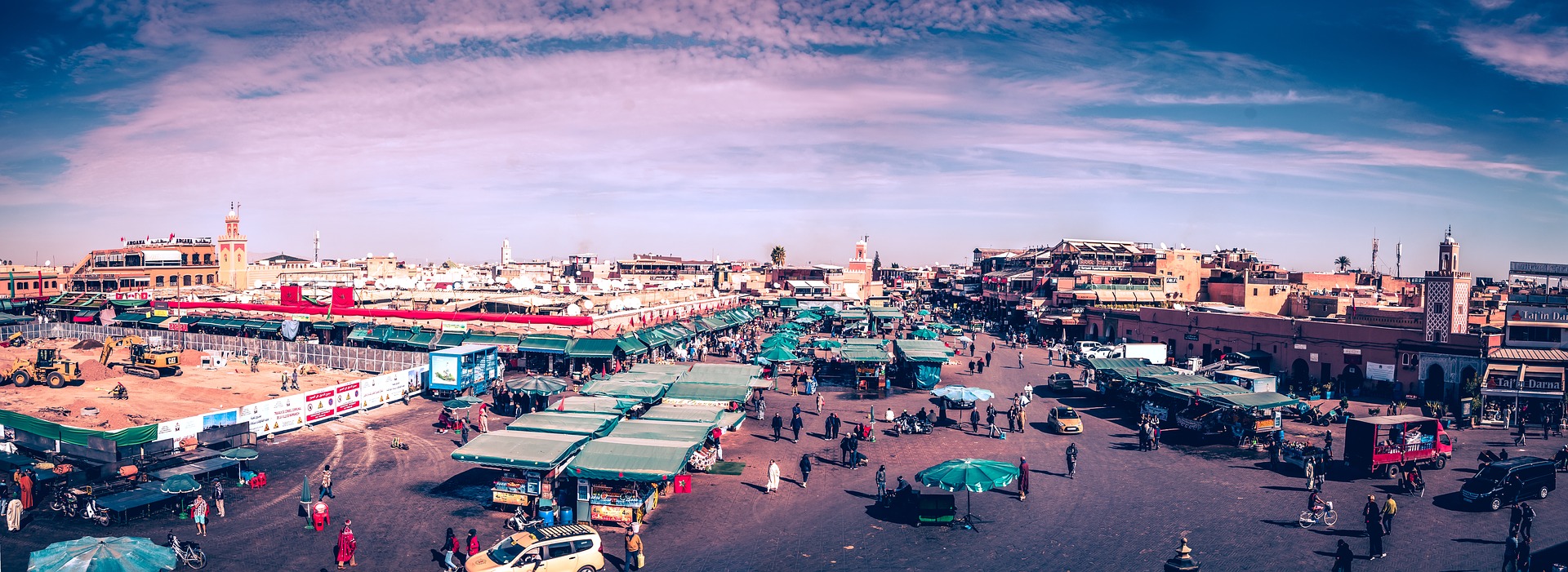
Book Your Stay Now in Marrakech, Morocco
Use the interactive map below to search, compare and book hotels & rentals at the best prices that are sourced from a variety of platforms including Booking.com, Hotels.com, Expedia, Vrbo and more. You can move the map to search for accommodations in other areas and also use the filter to find restaurants, purchase tickets for tours and attractions and locate various points of interest!

Ana Astri-O’Reilly is a fully bilingual travel blogger and writer originally from Argentina. She has published travel and food articles in a variety of outlets and is active on social media platforms. You can read her musings, memories, and other writing here.
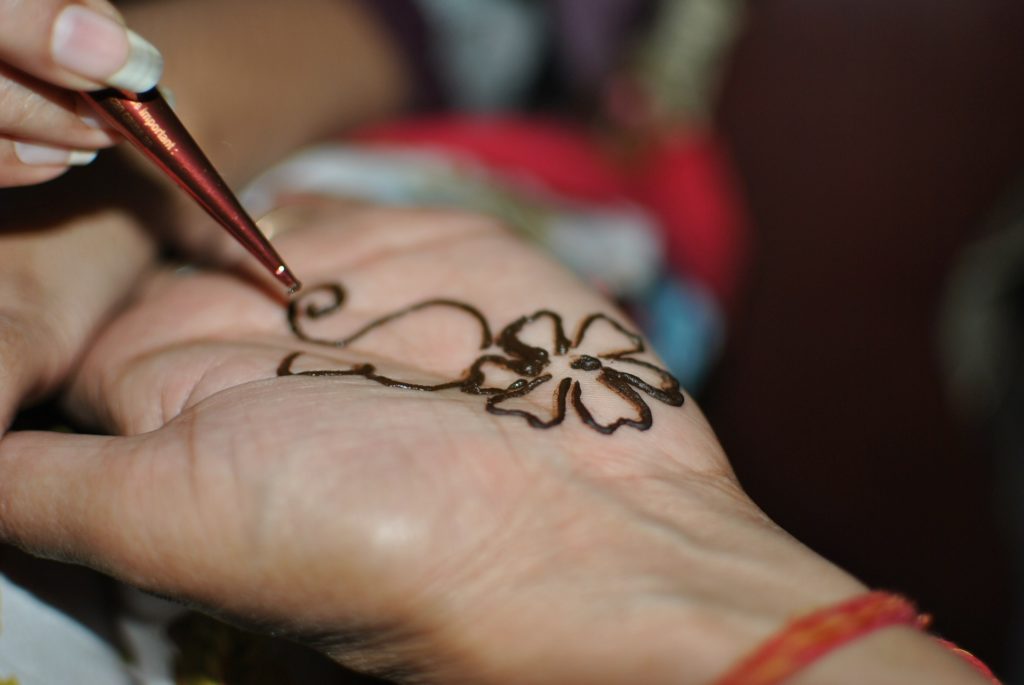
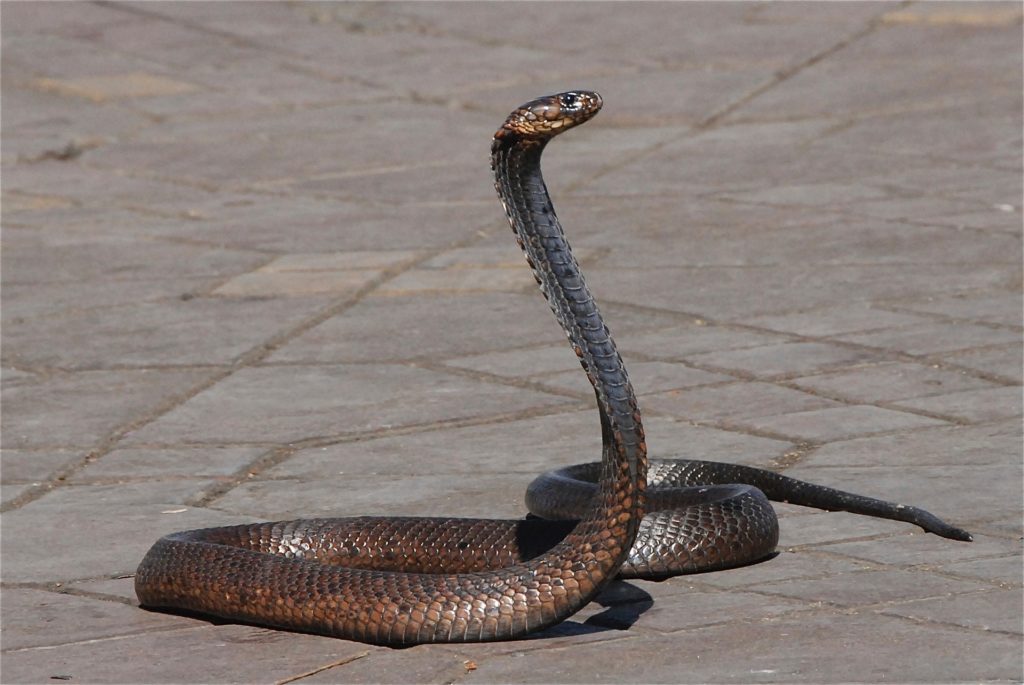
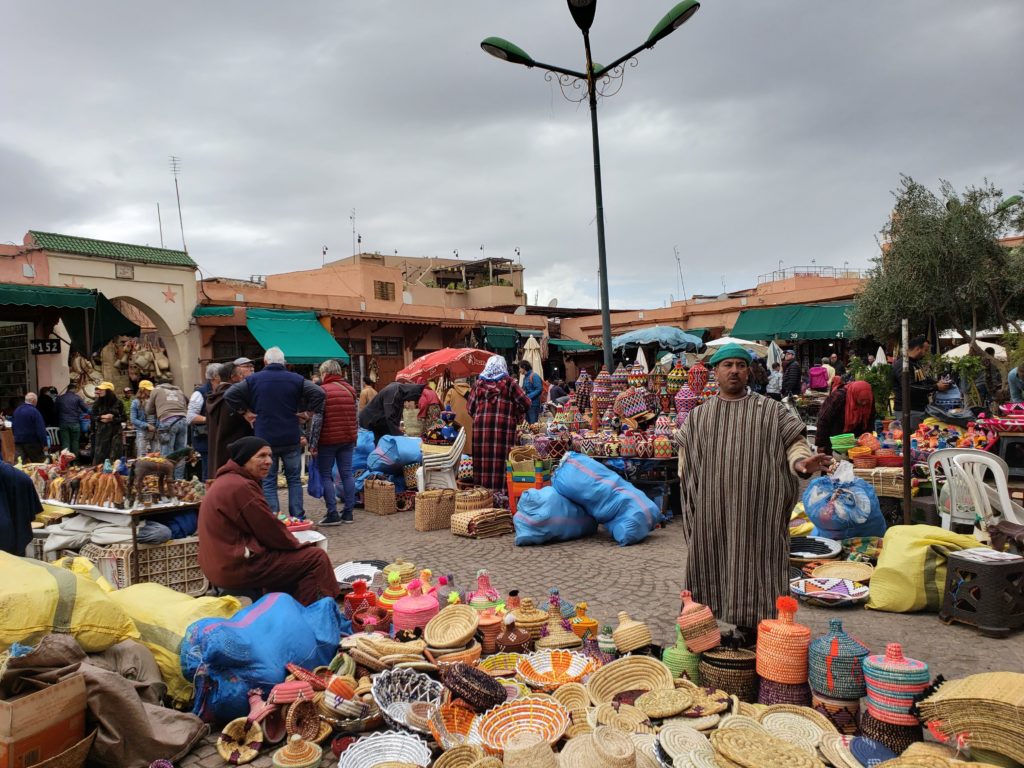
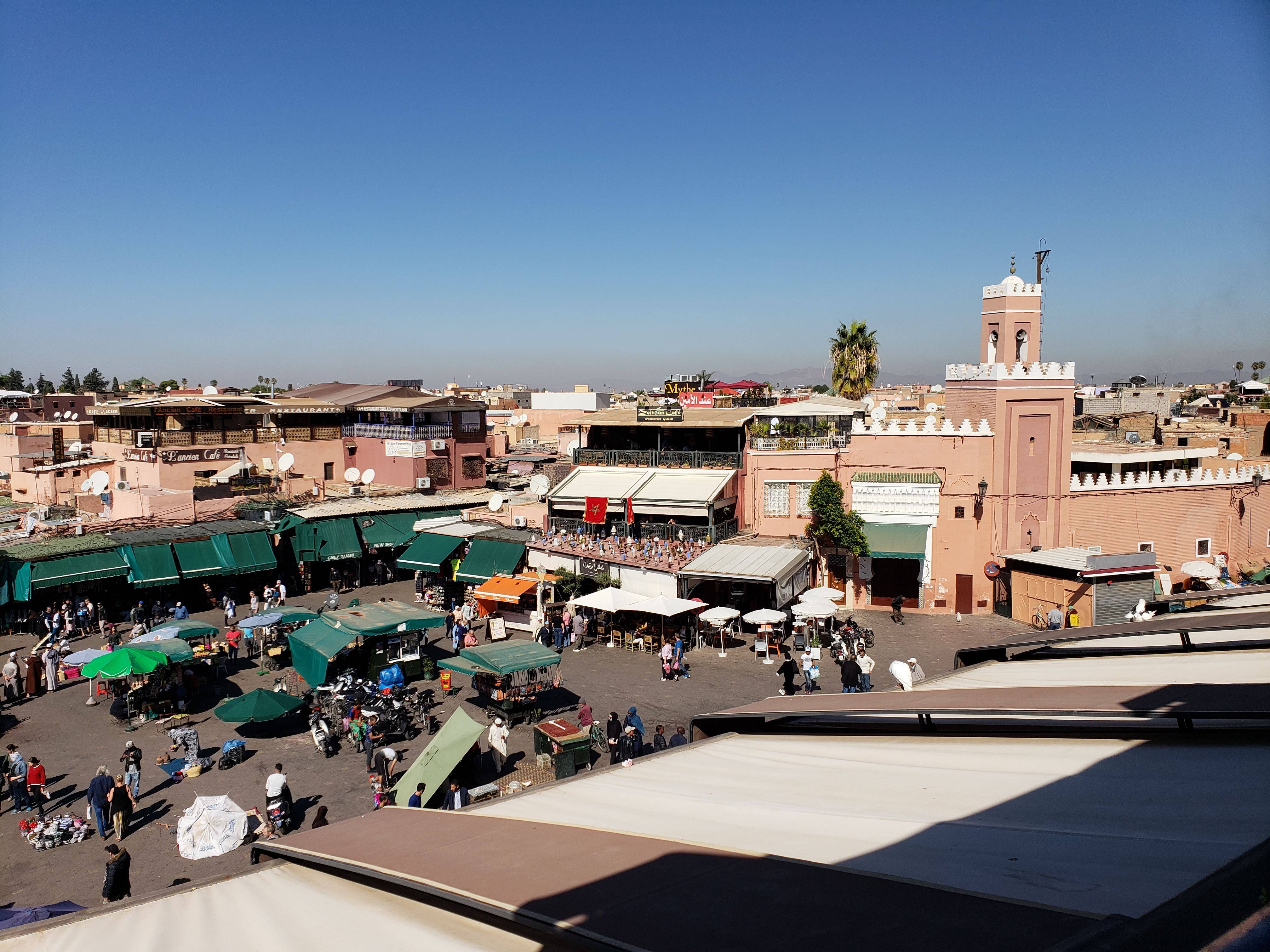
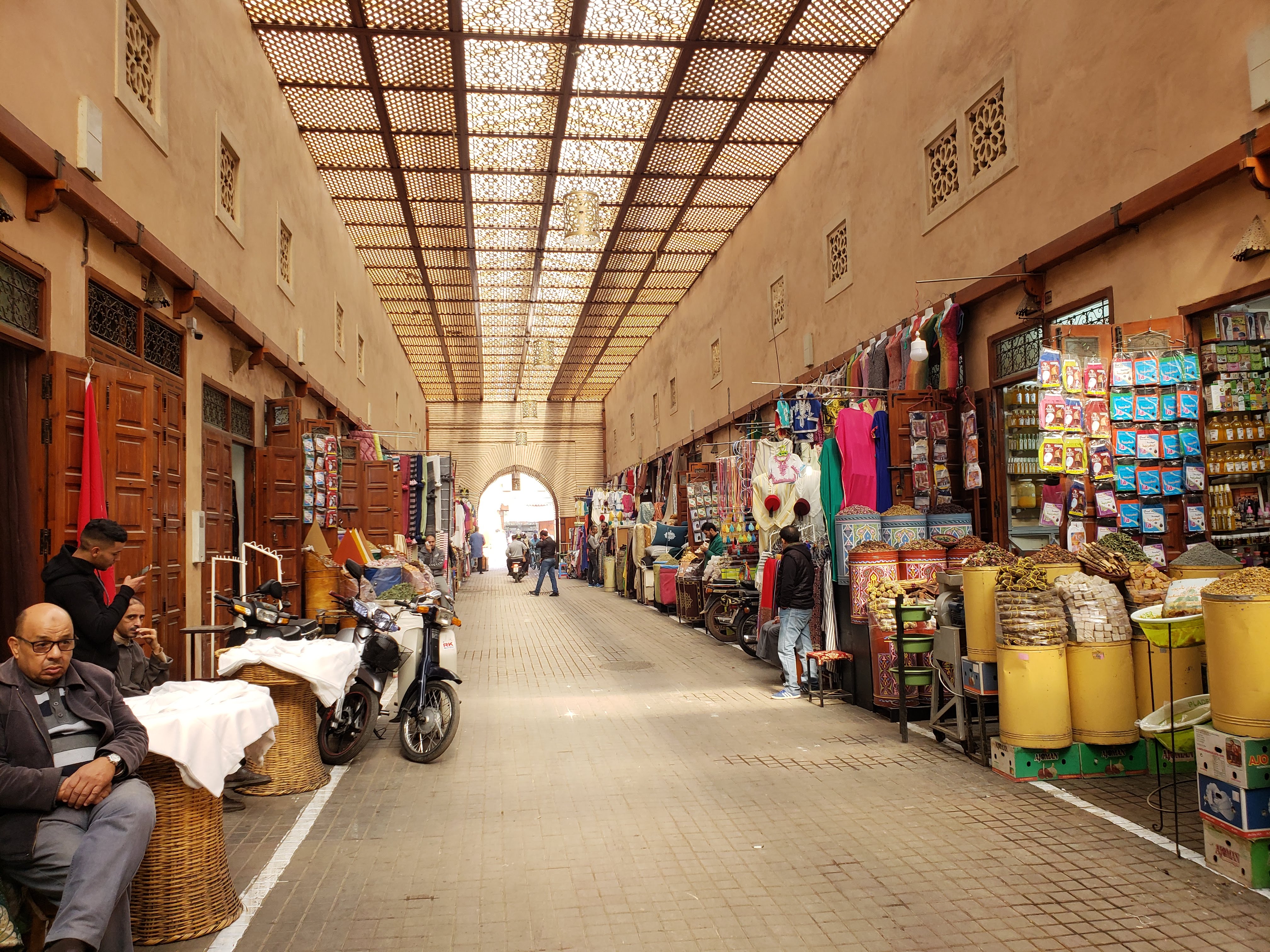
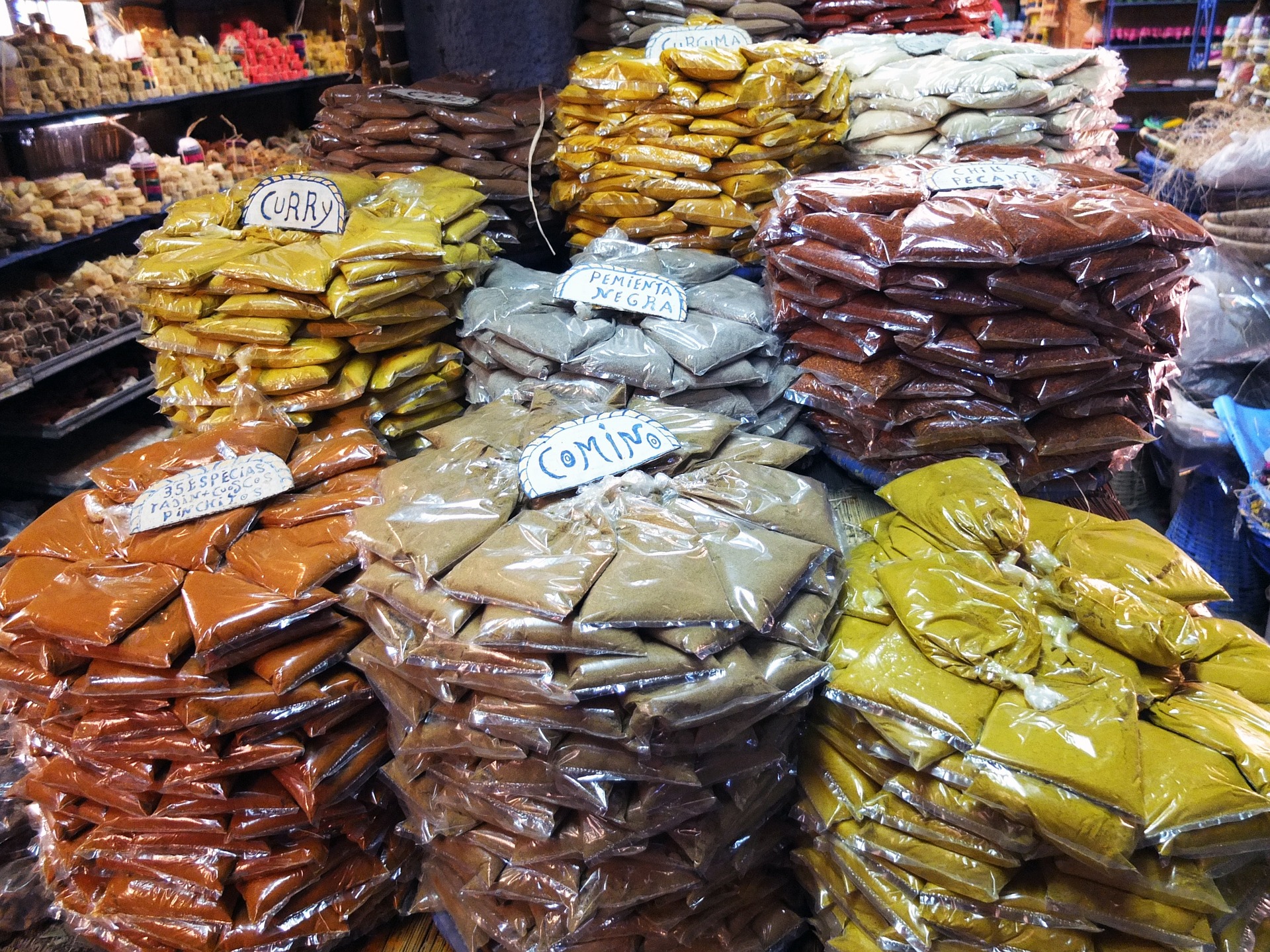
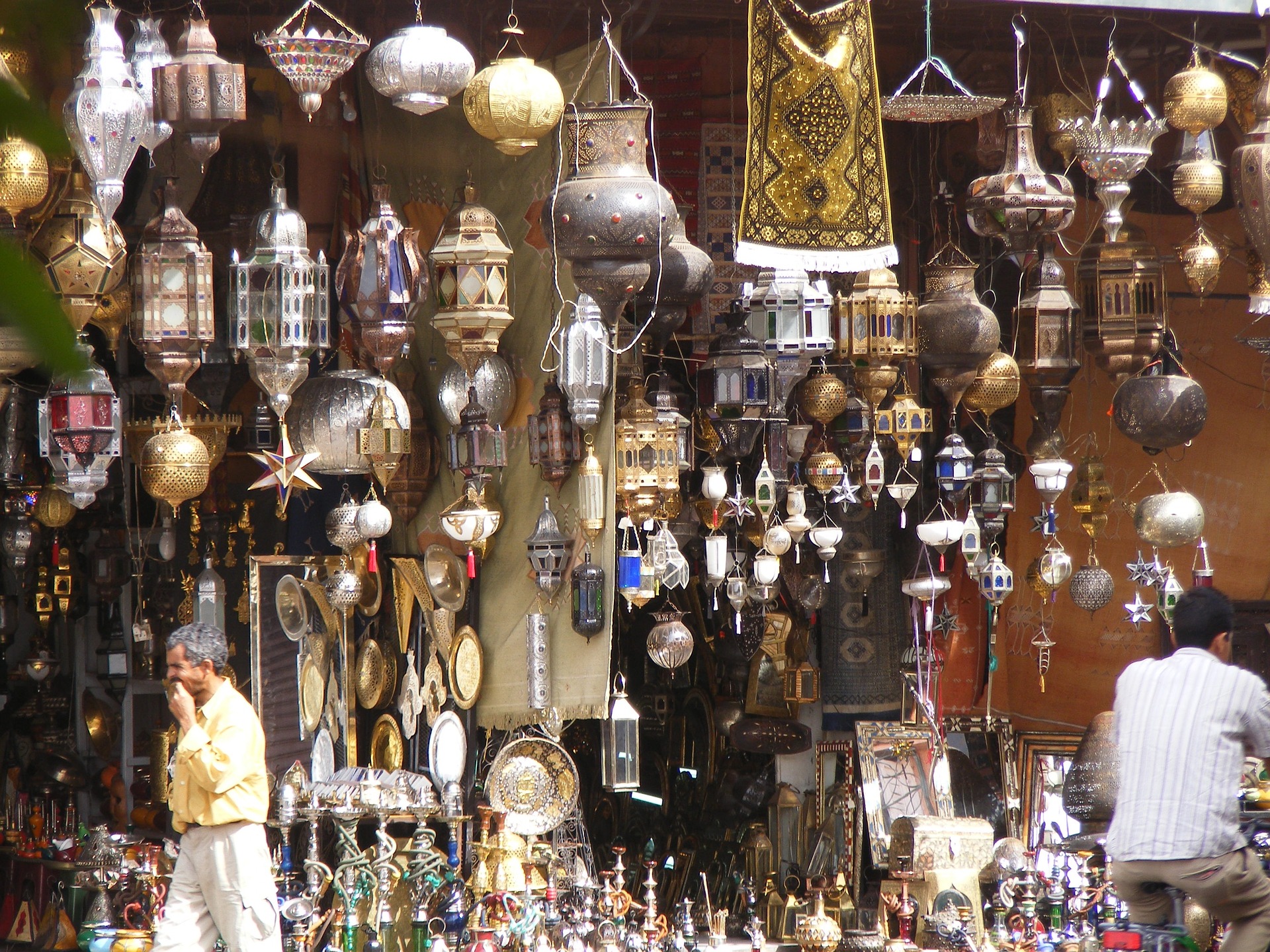
MARRAKECH DANS LA PRESSE INTERNATIONALE, LE CÔTÉ SOMBRE DE SES HÔTELS 5* ! :
https://agencedepressepanafricaine.com/maroc-arnaque-de-touristes-lhotel-kenzi-rose-garden-a-lindex
Le paragraphe concernant les réseaux sociaux corrompus, il s’agit de Facebook, TripAdvisor….!?
Veuillez publier SVP, partager pour avertir les gens. J’ai des preuves et dans l article et chez moi. Merci